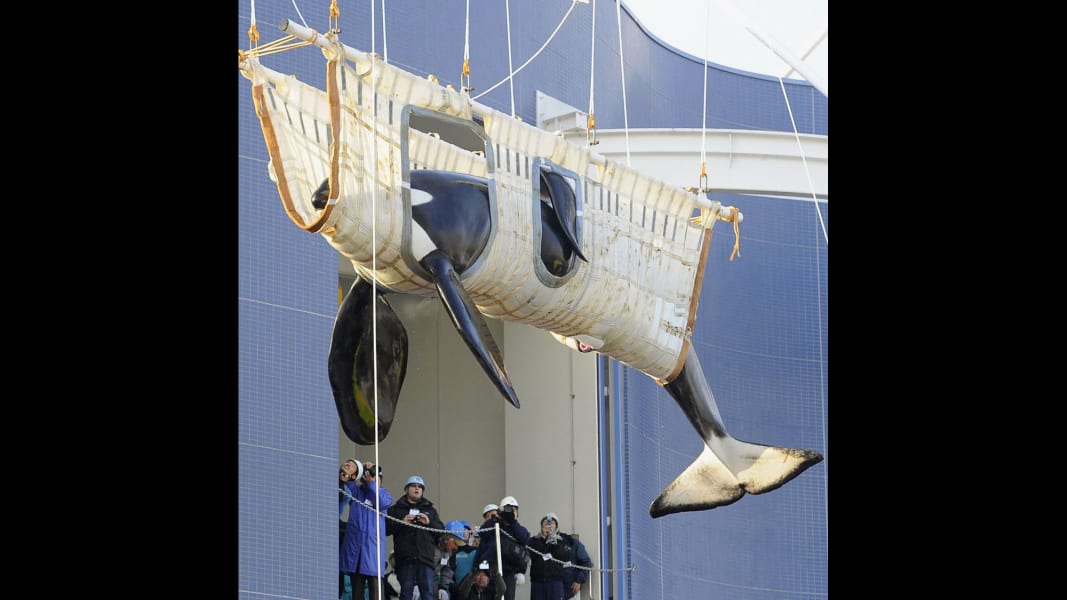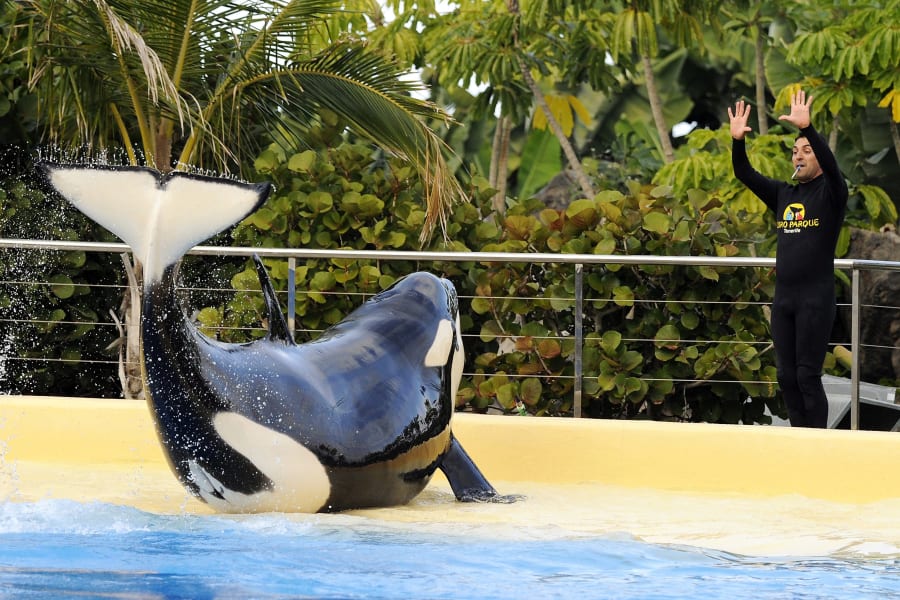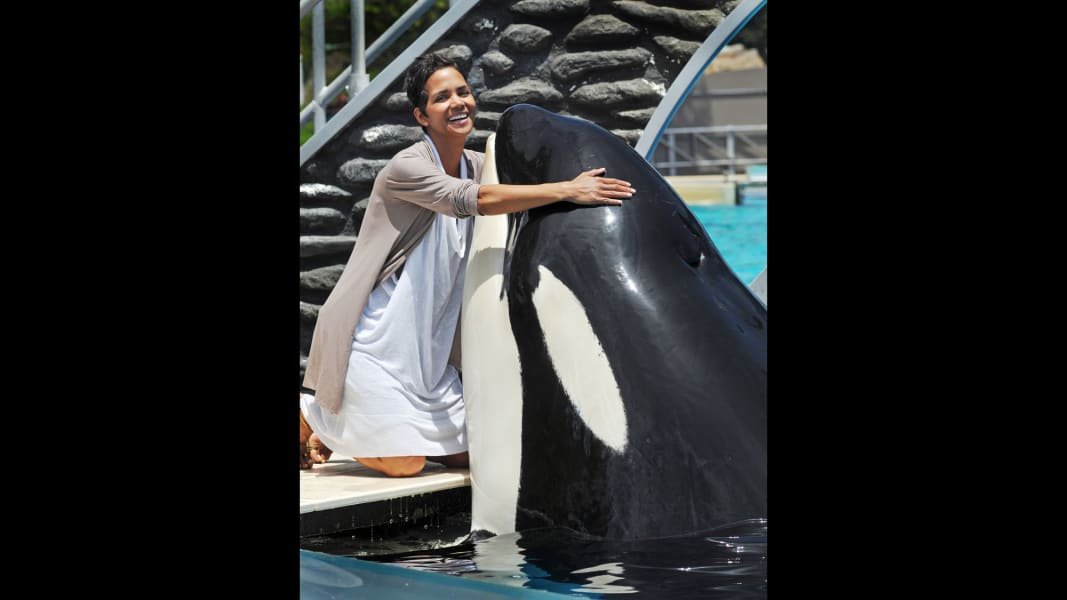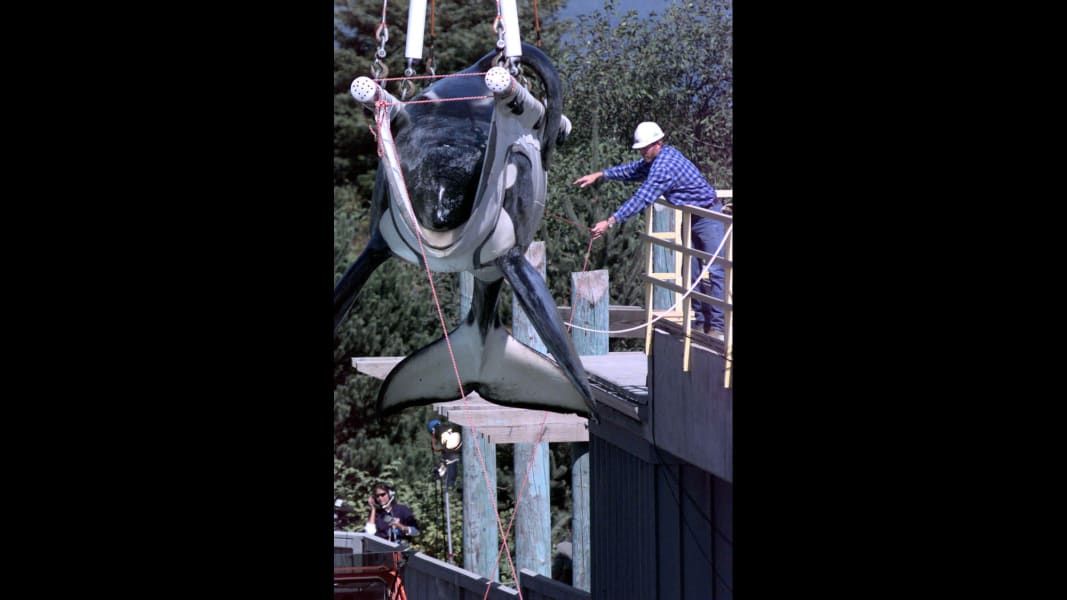Share
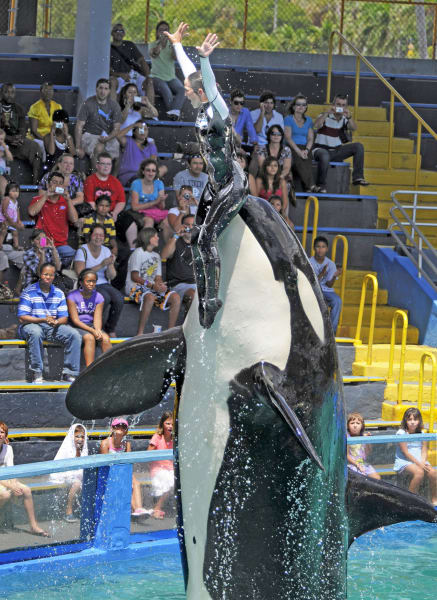

1 of 8
Lolita, a captive killer whale at the Miami Seaquarium, was added to the endangered species listing for Southern Resident Killer Whales by NOAA Fisheries in February. Although her species was already listed as endangered, Lolita was not previously included because there was an exemption for captive members of the population. Lolita has been at the Miami Seaquarium since 1970. Marice Cohn Band/Miami Herald/MCT/Getty Images
Killer whales, or orcas, were first put on public display in the 1960s. The best known killer whale shows in the United States are at SeaWorld Parks, which are synonymous with their "Shamu" killer whale shows, seen here. PRNewsFoto/Busch Entertainment Corporation/AP
SeaWorld's first park opened in San Diego, California, in March 1964 with only a handful of employees, a few dolphins, sea lions, and two aquariums. The park introduced orcas the next year, and they quickly became the stars of the park's shows. A steady stream of celebrities have posed with SeaWorld's killer whales, including actress Halle Berry, seen here in 2009. Bob Couey/SeaWorld San Diego via Getty Images
SeaWorld opened its Orlando park in 1973, where the first killer whale was born in captivity in 1985. SeaWorld emphasizes that it is "dedicated to education, entertainment, research and conservation" of all its marine animals. Here, two orcas at SeaWorld Orlando perform in 2000. Chris B. Gotshall/Sea World Orlando/AP
The 1993 hit movie "Free Willy" captured hearts and sparked a massive campaign to free Keiko, the orca that played "Willy" in the movie, from the Mexican amusement park where he performed. Here, Keiko is being prepared to be released into the wild in 1998. In 2002, Keiko spent five weeks journeying across the Atlantic to Norway. He wasn't quite ready to be independent, finding companionship among the Norwegian fishermen and children. He died in December 2003, most likely from pneumonia. Dave Nolan/DOD/AP
A male killer whale, Bingo, is transported to the Nagoya Port Aquarium in Japan in December 2011, after the death of the aquarium's only other orca. Marine animal activists say the transfers of orcas between marine parks are unhealthy for these mammals because of the stress and trauma. Kyodo/AP
This female killer whale, Morgan, was taken in by a Dutch dolphinarium after being found starving in the shallow waters of the North Sea off the Netherlands coast. She is now performing at Loro Parque in Spain's Canary Islands -- despite an agreement that she would be released into the wild after her rehabilitation. Animal rights activists have mounted a legal challenge for her release. JAN KANNING/EPA/LANDOV
Today, there are 45 captive orcas performing at about 10 parks across the world, most of them born in captivity. Here, orcas perform at the Marineland aquatic park in Antibes, in southeastern France. Lionel Cironneau/AP Photo
